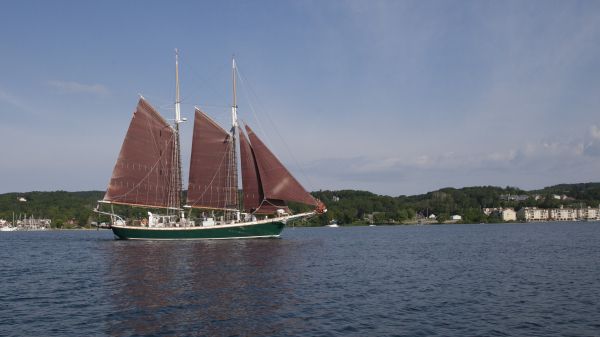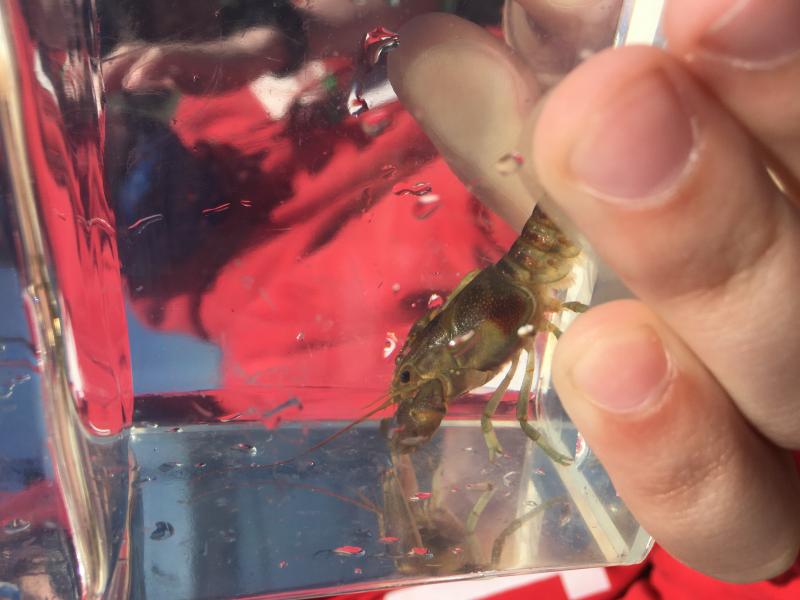Connecting with the Great Lakes through Watershed Education

eeBLUE Watershed Chronicles
This post was written by Juliana Lisuk, Associate Director, Inland Seas Education Association (Suttons Bay, MI)
Inland Seas Education Association (ISEA) and SEEDS Ecology & Education Centers partnered to bring enriching watershed-related STEM projects to nearly 200 students in rural Northern Michigan schools at seven 21st CCLC sites. All sites are located within an hour and a half drive of Lake Michigan, though many students at these sites have never visited the shoreline.
Through this project, students had an opportunity to gain awareness, understanding, and interest in a variety of skills and experiences in the context of learning about their local watershed. More importantly, they connected their smaller watershed in which their after-school programs are located to the larger Great Lakes watershed. Creating a connection between the land and water is integral to forming a stewardship ethic from a young age, so it was important to us to create a series of activities that allowed students to see that even if they don’t live directly on a Great Lake, they are part of the Great Lakes watershed and have an effect on the overall health of the system.

Our series of activities were meant to take place in person both at the 21st CCLC sites and through field trips. We were preparing for our kick-off “Watershed Orientation” activity when we realized it could not happen as originally planned, as outside educators were not allowed to come into the schools at that point. We pivoted and created a “Watershed Orientation” education box for all of our sites. The box included a giant floor map with an outline of the Great Lakes, activity sheets and lesson plans for students to explore the watersheds at their home and school, and opportunities to connect virtually with our nearby national lakeshore. This allowed each site to learn at their own pace and age level while keeping within their COVID precautions.
While the Watershed Orientation box was a good introduction activity, it was a goal of ISEA and SEEDS to connect the students in a hands-on way with the Great Lakes. We were finally able to do that with the majority of the 21st CCLC groups on a field trip aboard the Schoolship, Inland Seas, in Suttons Bay. Throughout the season, over 75 SEEDS students boarded a traditionally rigged schooner in Lake Michigan. They assumed the role of a Great Lakes scientist to study the health and ecology of Lake Michigan. They collected and analyzed a wide variety of samples, including fish, plankton, benthos, and microplastics, to determine the health of the lake.

A sixth-grader from Kalkaska, Makayla, said: “I went on a trip to Inland Seas, and it was really fun to learn about wetlands and the lakes. I also went on the boat and learned about plankton, how to steer the boat, how to put a sail up, and how to catch fish. It was really fun!”
For many students, the field trip aboard Inland Seas was the first field trip they had been on in over a year and a half, and it was a highlight of their year. The excitement from learning through tactile experiences in a new setting was palpable. Students were able to use sampling equipment, steer the ship, touch the benthos, hold a round goby, and haul up the anchor. Unique, positive experiences out on the water combined with connecting activities in students’ home settings are what we hope foster a lifelong desire to care for our environment, and the Great Lakes in particular.

Projects of this scale are only possible through partnerships. “This is exactly the type of programming and partnership that makes for extraordinarily special experiences for students,” SEEDS Executive Director Sarna Salzman. “We are honored to work with ISEA and help in efforts to extend their reach inland and into nearby rural communities.”
It was energizing for students, teachers, and staff to experience the marvels of the Great Lakes together. As we continue to navigate challenges, it is important to recognize and celebrate the joy brought by moments of reconnection.
The NOAA Office of Education and NAAEE partnered to increase environmental and science literacy among NOAA’s partners and external networks. In this five-year partnership supported by the U.S. Department of Education, NOAA and NAAEE worked together to provide enriching after-school watershed-related STEM (science, technology, engineering, and mathematics) projects through NOAA-21st Century Community Learning Centers Watershed STEM Education Partnership grants. These grants supported programming for a total of 100 local 21st Century Community Learning Centers (21st CCLC) sites and their students. The 30 selected projects served 18 states, ranging from Alaska to Florida.
